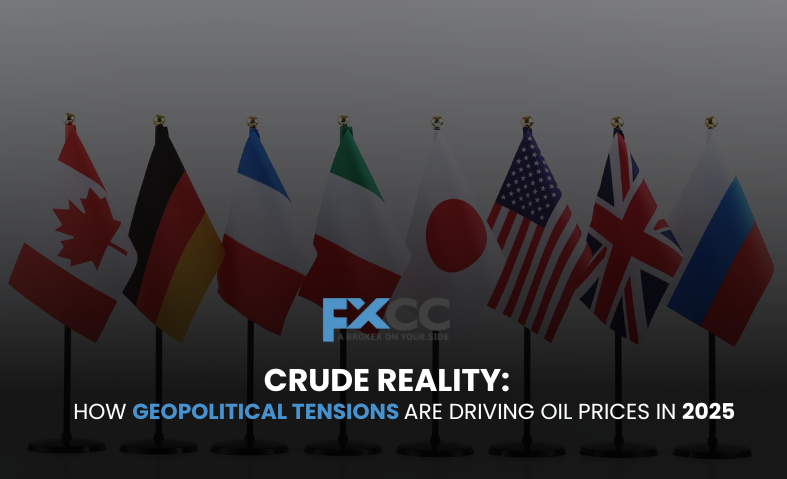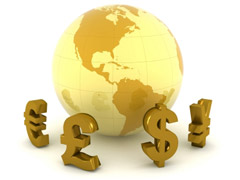The global oil market in 2025 is a complex beast, constantly shifting under the weight of supply, demand, and most crucially, geopolitical tensions. While economic factors and the slow march of renewable energy play a role, it’s the simmering conflicts and unpredictable policy shifts across the globe that are truly stirring the pot, leading to the “crude reality” of volatile and often higher oil prices.
The Ever-Present Shadow of the Middle East
The Middle East remains the undisputed epicenter of oil-related geopolitical risk. Even minor tremors in this region can send shockwaves through the global market. In 2025, the ongoing instability, particularly around key oil-producing nations and critical shipping lanes like the Strait of Hormuz, is a primary concern. Any escalation in conflicts, whether direct military action or proxy wars, has the immediate potential to disrupt supply, trigger panic buying, and push prices sky-high.

While some reports suggest the Middle East is maintaining steady production and even has spare capacity, the underlying tensions are a constant threat. The possibility of tighter sanctions on Iranian oil, for instance, remains a significant wildcard. Even if a full-blown supply disruption is avoided, the “fear premium” embedded in oil prices due to these regional uncertainties is substantial.
The Lingering Impact of the Russia-Ukraine Conflict
The Russia-Ukraine war, now well into its third year, continues to reshape global energy flows. While the initial shock has worn off, its long-term effects on oil prices are still being felt. Sanctions on Russian oil exports have forced a reorientation of trade, with Russia increasingly turning to Asian markets. This rerouting of supplies creates logistical challenges and can impact global price benchmarks.
Furthermore, any new or intensified sanctions, especially those targeting Russia’s ability to export its oil, could severely constrain global supply and drive prices up. While some analysts believe the market has enough spare capacity to absorb a partial loss of Russian exports, a significant decline could still lead to a sharp increase in prices, particularly for natural gas, with a ripple effect on oil. The political rhetoric and potential actions by major global powers, like the US, concerning Russian energy, remain a key determinant for oil price stability.
US Policy and its Global Reach
US energy policy and its foreign relations are significant factors influencing oil prices. A shift towards a more pro-oil administration in the White House, as some reports suggest for 2025, could lead to a more optimistic outlook for domestic production. The US continues to be a major non-OPEC+ producer, with forecasts indicating increased output from the US, Canada, Brazil, and Guyana. This increased supply from non-OPEC+ nations can help mitigate some of the upward pressure on prices from geopolitical disruptions.
However, US trade policies, such as the imposition of tariffs, also carry weight. Tariffs on goods from major economies like China could dampen global economic growth and, consequently, limit oil demand. Moreover, the degree of US support for allies in volatile regions can directly impact the likelihood of supply disruptions from countries like Iran, further influencing global oil prices.
OPEC+’s Balancing Act
The OPEC+ alliance, a group of major oil-producing nations, plays a crucial role in managing global oil supply. Their decisions on production cuts or increases have a direct and often immediate impact on prices. In 2025, OPEC+ is facing a delicate balancing act. While global oil supply appears well-supplied in the absence of major disruptions, the group has been unwinding some of its voluntary production cuts.
This strategy aims to prevent a market oversupply that could drive prices down. However, if non-OPEC+ production continues to rise faster than global demand, OPEC+ might be forced to consider deeper cuts to maintain price stability, or risk losing market share. The effectiveness of their coordination and adherence to agreed-upon limits will be key in shaping the market.
Demand Dynamics and the Energy Transition
While geopolitical tensions grab headlines, the underlying dynamics of global oil demand and the ongoing energy transition also contribute to the price picture. Global oil demand is still growing, particularly in non-OECD countries, with China being a primary driver. As emerging economies continue to develop, their energy needs, especially for transportation, are expected to rise.
However, the accelerating shift towards renewable energy and the increasing adoption of electric vehicles are gradually putting downward pressure on long-term oil demand. While this transition won’t cause an immediate collapse in prices in 2025, it does create a ceiling for how high prices can sustainably go. Investment in green energy technologies is increasing, and countries are diversifying their energy portfolios, aiming for greater energy independence and less reliance on volatile oil markets.

Bottom Line
In 2025, crude oil prices are a direct reflection of a world in flux. While rising production from non-OPEC+ nations and the gradual shift to renewables offer some stability, the unpredictable nature of geopolitical conflicts in key oil-producing regions, combined with the strategic decisions of major players like OPEC+ and the US, means that volatility will remain a defining characteristic of the oil market. Businesses and consumers alike must brace for a “crude reality” where global tensions will continue to dictate the cost of energy.


